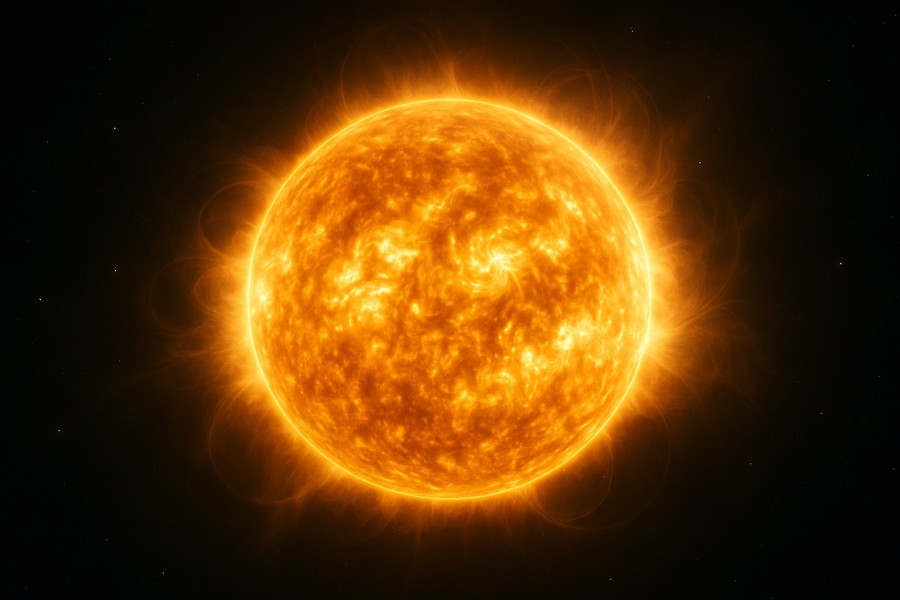
Unraveling the Enigma of the Sun's Heated Atmosphere
The question of why the sun's external atmosphere is significantly hotter than its surface, even though it's farther from the core, has puzzled scientists for many years. The surface temperature is in the millions of degrees Fahrenheit, while the external atmosphere registers around 10,000 F (5,500 C).
However, new findings have shed light on this longstanding mystery. Scientists have discovered elusive "magnetic waves" in the sun's atmosphere that could be the cause of the intense heat in the corona.
Unveiling the Solar Mystery
Researchers have long been baffled by the extreme temperature of the sun's corona and the high-speed flow of heated gas known as the solar wind that jets out from the sun at over 1 million mph (1.6 million km/h). Where does the energy for these phenomena come from? Scientists initially thought that rolling convection at the sun's surface was the source of the necessary energy. However, how this energy was transferred into the atmosphere and solar wind, and how it was converted into heat and momentum, remained unclear.
In 1942, a Swedish plasma physicist suggested that magnetic waves might hold the answer. These waves, now dubbed Alfvén waves, were believed to exist in the corona but had never been observed there until recently. Previous instruments were not sensitive enough to detect the Alfvén waves. Nevertheless, many numerical experiments and space weather forecasting tools assumed their existence in the corona, although the properties of the waves used in the models were based on educated guesses.
Groundbreaking Observations
Thanks to a new high-resolution telescope, scientists have been able to make cleaner measurements than any previous solar observatory. They used the telescope's Cryogenic Near Infrared Spectropolarimeter to search for the elusive coronal Alfvén waves.
This tool can track the movements of the corona through images and examine changes in the sun's plasma (superheated gas) due to a phenomenon known as the Doppler shift. The Doppler shift is the apparent difference in the frequency of a wave as the observer and the source of the wave move towards or away from each other. It's a common phenomenon we experience in everyday life, like the change in the sound of an ambulance siren as it drives by us.
The data from this tool allowed scientists to observe the signature of the Alfvén waves, which in a plasma like the corona, is a back-and-forth twisting of the magnetic field. This appears as an alternating pattern of red and blue Doppler shifts on opposite sides of the magnetic fields. They found these waves were continually present during the time of observation, suggesting they are common across the rest of the atmosphere.
Significant Findings
Most importantly, the analysis showed that the waves likely carry a significant amount of energy. This is a game-changing revelation, as astronomers have been torn between solar waves and a process called magnetic reconnection - where magnetic fields on the sun intertwine and snap, releasing energy - as the cause of the intense corona heating.
Although evidence from various spacecraft indicates that magnetic reconnection contributes to coronal heating, the new findings show a more complex picture. Both waves and reconnection are frequently occurring throughout the sun's atmosphere.
These findings suggest that the Alfvén waves are present and carry a significant amount of energy, potentially contributing at least half of the energy needed to heat the corona. However, accurately estimating the exact energy associated with the waves remains a challenge.
